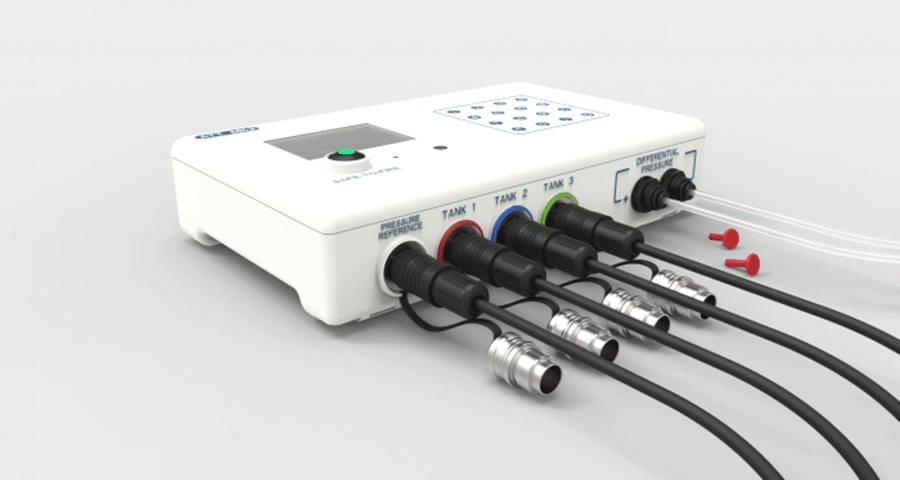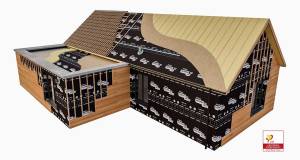
- Product News
- Posted
University of Nottingham launches new 'Pulse' air-test unit
The University of Nottingham has developed a “novel and easy-to-use test for measuring the airtightness of buildings” in order to help eliminate draughts, improve energy efficiency and reduce heating bills.
The testing of airtightness is needed to help establish and minimise the infiltration rate of cold air into buildings and the loss of heated air out through gaps, holes and cracks in the building fabric.
Known as the Pulse test, the new airtightness tester has been researched and developed by the University of Nottingham over 14 years and is now being commercialised with industry partners.
Dr Ed Cooper, lead developer of the Pulse test, from the research group 'Architecture, Energy and Environment' at The University of Nottingham, said: “The gap between design and performance of airtightness in buildings can at best cause discomfort for occupants and at worst create significant energy wastage and health problems."
"The new test, which is quick and easy to operate, could help mitigate these problems by enabling tests that can be conducted by anyone with minimal training. It could have a big impact on improving the performance of buildings.”
The Pulse test releases a short burst of air that creates a low pressure pulse throughout the whole test building, this can then be used to measure the flow through leakage pathways and hence the airtightness of the building.
The latest version of the Pulse test comprises a composite compressed air tank and control box mounted on a compact and portable trolley that can be wheeled into a building for testing. The test takes only a few seconds and causes minimal disruption to construction work or building occupants.
The current industry-standard ‘blower door’ technique requires sealing off an external doorway with a fan and blowing air in or out to create a high pressure difference between the inside and outside. The blower door, which has been used since the late 1970s, typically takes 15-30 minutes to complete and requires a trained operative.
According to the University of Nottingham, the Pulse technique is quick and easy enough for construction workers to perform themselves multiple times prior to completion, saving time and test costs later on. The Pulse testing unit is self-contained and has "no need to penetrate the building fabric or block up any doorways".
The results are calculated inside the Pulse unit, which has a “user-friendly graphical interface” for analysis, and could have the potential to automatically upload to the internet — removing any potential for results to be doctored.
The test also offers accurate and repeatable results by measuring at typical infiltration pressures and accounting for changes in background pressure levels caused by the wind or outside temperature.
The Pulse test has garnered over £1m in funding throughout its development, including an EPSRC First Grant which helped to secure proof of concept and an InnovateUK grant for further software and product development with industry partners.
The University is currently in negotiations to licence the technology to a joint venture, consisting of Elmhurst Energy, National Energy Foundation and Absolute Air and Gas — to make the Pulse test a commercial reality.






